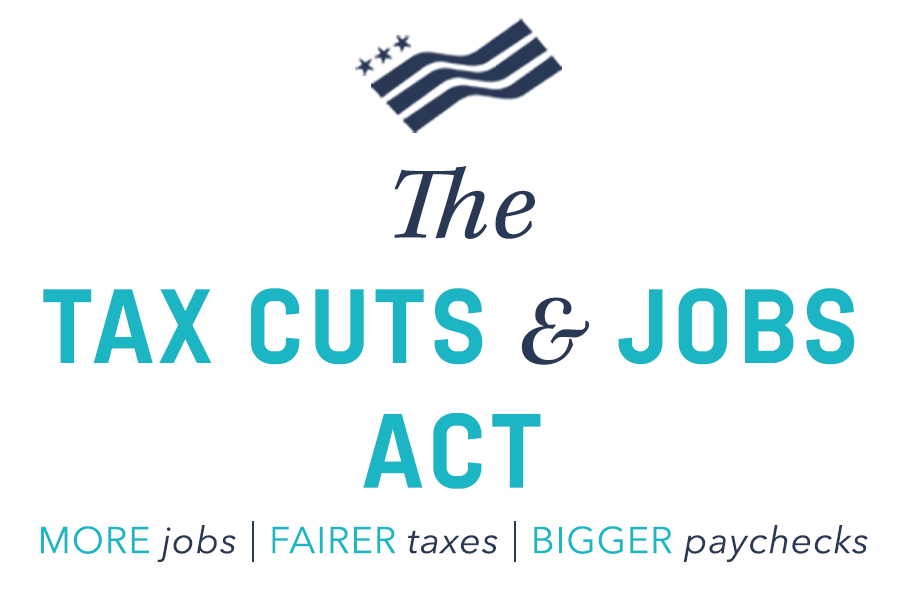
As posted by Thomson Reuters on 12/22/17 On 12/22/17, President Trump signed into law H.R. 1, the “Tax Cuts and Jobs Act,” a sweeping tax reform law that will entirely change the tax landscape. The legislation reflects the largest major tax reform in over three decades. This Tax Planning Letter, which refers to the Act by its commonly used name, “Tax Cuts and Jobs Act”(or simply, the “Act”) describes key changes made under that Act that would affect sole proprietorships, S corporations, partnerships, tax-exempt organizations, electing small business trusts, and retirement plans, including a new deduction for pass-through income. For comprehensive summaries on other areas of the new law, see: (#243) Highlights of the “Tax Cuts and Jobs Act”- Business Tax Changes (#244) Highlights of the “Tax Cuts and Jobs...
As posted by Thomson Reuters on 12/22/17 On 12/22/17, President Trump signed into law H.R. 1, the “Tax Cuts and Jobs Act,” a sweeping tax reform law that will entirely change the tax landscape. The legislation reflects the largest major tax reform in over three decades. This post, which refers to the Act by its commonly used name, “Tax Cuts and Job Act” (or simply, the “Act”) describes key individual tax changes that are made under the Act. This comprehensive tax overhaul dramatically changes the rules governing the taxation of individual taxpayers for tax years beginning before 2026, providing new income tax rates and brackets, increasing the standard deduction, suspending personal deductions, increasing the child tax credit, limiting the state and local tax deduction, and temporarily reducing the medical expense...
As posted by Thomson Reuters on 12/22/17 On 12/22/17, President Trump signed into law H.R. 1, the “Tax Cuts and Jobs Act,” a sweeping tax reform law that will entirely change the tax landscape. The legislation reflects the largest major tax reform in over three decades. This post, which refers to the Act by its commonly used name, “Tax Cuts and Job Act” (or simply, the “Act”) describes key business tax changes that are made under the Act. Among the changes are a permanent reduction in the corporate tax rate to 21%, repeal of the corporate alternative minimum tax (AMT), imposition of new limits on business interest deductions, and a number of changes involving expensing and depreciation. For comprehensive summaries on other areas of the new law, see: (#244)...
Valid Reasons for FTB Penalty Abatement As appearing at Spidell's California Minute on 10/9/16 You've been assessed a penalty for the late filing of your return or payment of tax . . . what are your options? One is to claim that you had "reasonable cause" for the infraction. Although it is an option, it is an extremely difficult case to make. In fact, the only reasons that likely work are: taxpayer is seriously ill, taxpayer has died, or taxpayer is the victim of some egregious act over which they had no control, and neither the taxpayer nor their spouse were able to file returns and pay tax. In the attached audio clip (click on photo above to listen), Spidell Publishing's "California Minute" discusses the difficulties of proving reasonable...
A tool for IRS auditors to identify potential tax issues As posted to the IRS website on 9/14/16 Overview On September 14, 2016, the IRS issued an Audit Techniques Guide (ATG) on the Capitalization of Tangible Property. The ATG is a tool to assist IRS examiners in identifying potential tax issues. Examiners are advised to carefully assess risk and apply the law to the facts and circumstances for issues involving the capitalization and dispositions of tangible property. Background The IRS and the Treasury began a project in 2004, to revise the tangible property regulations. In anticipation of these regulations, many taxpayers changed their method of accounting beginning as early as 1/1/06. As a result, many of these taxpayers may now be using a method of accounting for tax purposes that...





